Words & Pictures by Andy Prisbylla.
The tribal constitution is a key philosophy in the history of the home. Shelter, in all intents and purposes, is designed to provide security and comfort to those who inhabit it. Before the permanence of contemporary lodgings, dwellings existed in a more ephemeral nature. The nomadic tradition of early housing was dictated by the hunter/gather instinct, resulting in shelters that lasted only periods of days, weeks and months before being discarded and recreated in a different environment. As seasonal temperaments and agricultural needs began to shift, the idea of the home changed as well, becoming more intimate and fixed. Urbanization soon kicked in and families migrated from the rural land to more densely populated areas, creating societal norms and a sense of community. The home became much more personal. A place where you felt safe and secure. Your own immediate sanctuary from the harshness of the outside world.
Enough with the history lesson. I knew this was going to be a sad one as soon as I got in the car. I’ve been putting off this adventure for quite some time. My parents sold my childhood home four years ago and it’s been languishing in abandonment for the past two. Lurid stories have manifested of what’s become of the property since the previous owner couldn’t afford the mortgage and the bank foreclosed on the house. Strange tales of chicken coops overrunning the two acre property that blighted the market value and upset neighbors. Disgusting descriptions of multiple pets destroying the inside carpet with feces, urine and all the other wonderful byproducts that cats and dogs produce. The sump pump recently quit working and the basement was now flooded with over two feet of water, creating a biohazard of mold throughout the house. The last public auction of $93,000 took no takers. Seems like a deal for a multi-level three bedroom home with two bathrooms, but all buyers are responsible for repairs and the purchase of a new furnace, and the last time I checked money doesn’t grow on trees.
This unfortunate circumstance of lost homes and broken dreams has become a harsh reality for those in the household market, particularly in Jefferson County, Ohio, where my old stomping grounds are located. 20% of all residencies are currently in the pre-foreclosure stage with 56% on the auction block and 24% in the hands of the bank. Sometimes this is the fault of the homeowner, or in most cases, the dreaded eye of the economy. Regardless of the blame game mortgages fail and families suffer. It wasn’t like this when I lived there, and I try to remind myself of that as I pull off the parkway onto Route 22; that great connector of the tri-state area that unifies Pennsylvania, West Virginia and Ohio in geographic harmony.
It’s the people who make the home and my parents were pretty good at that. $28,000 in 1976 could take you a long way, particularly on my father’s coal mining salary. My folks broke ground that winter after two years of marriage and surviving the rental market. The last place they lived in had rats and they would be damned if that was going to continue any further. The frame went up not too long after and by March of 1977 they had their first real home. The interior was barren and my mother spent the next couple of weeks painting the walls and staining the trim herself, an activity that she would continue to accomplish every year or two – just to keep things fresh. She was handy when it came to fixing things around the house, while my father loved the outdoors and made sure the two acre yard was always kept up.
I turn off 22 for a short bypass along Route 43 and make a left onto Highway 646. I drive up to the house for the first time in four years. Gone are those days of an unblemished facade and I welcome in the dysfunction. The landscape crew the bank employs has been lax when it comes to yardwork, and the lawn is overgrown and dense. The gravel driveway is no longer visible. I remember being twelve years old one summer and a mother bird of cuckoo descent laid her eggs in the middle of the driveway. My family and I took it upon ourselves to protect this nurturing brood, and whenever we had visitors we made sure to point out – sometimes rather harshly – that they needed to watch what they were doing when they pulled their vehicles in. At the end of the summer I noticed that the eggs had hatched. Not long after I sat down on the front porch with my mom. In a sign of gratitude the mother bird and her kids walked past us – as if to say thanks for the summer long service. Sometimes good deeds get rewarded.
I make my way past the overgrown brush that has crawled up the side of the house and is now feasting on the warm juices of the neighbor’s power lines and head into the backyard. The three septic tank pipes that protrude through the ground are now buried in the overgrowth, and I trip on one as I push further into the underbrush. As kids we used these tanks as bases, with the triangular setting of the pipes making an ideal baseball diamond. The same goes for the clothes line that my dad and I would use as a badminton net. He was always better than me and I was sore loser, but that didn’t stop me from asking him to play time and time again.
I pull out my camera and start snapping away, making sure to close my bag in fear of snakes. The shutter hits hard and one shot lands on the basketball hoop that we installed in the garden after the soil turned to stone. My dad’s work shed stands achingly nearby, now dilapidated and on its way out. I remember keeping the basketball in there amongst the tractors, lawnmowers and other tools of the landscaping trade, and having to endure the sweet scent of gasoline that would buildup in the unventilated structure. I still love that smell.
The crux of every family unit, regardless of blood relations, is love. It’s about who you let into your circle and the experiences you have. It’s all subjective. The sadness that comes with an abandoned dwelling is not due to any sense of ownership, but to the moments you shared within them. The conversations, the get-togethers, the quiet occurrences and the epic battles that families partake in all become the story of your life, whether good or bad. They inform who you choose to be and you take what you will and leave the rest. People become homesick not because of the physical loss of place but because of the emotional connection they have with the individuals who informed that place. Overgrown brush and dilapidated wood may signal anger or sadness upon viewing, but it’s the corruption of the past that it truly represents.
A cold silence enters the atmosphere. My gut tells me that I’ve overstayed my welcome and I place the camera back in the bag. I thought my childhood memories would be forever tainted by the atrocity of neglect that I would witness. Instead I remember it as it should be: a home where my family and I once lived and a place of refuge where I felt safe and secure. That feeling will live on in my head and my heart, and that’s where it shall remain. Robert Smithson said that nature is never finished and he meant it. The process of entropy – an object’s gradual decline into disorder and chaos – is very real in both aesthetic and spirit and is hard to reverse. This is the rule of unpredictability inherent in the process. Nothing is finite when it comes to the journey of existence and the idea of stasis is imaginary. The world is constant flux. We try to keep things the way they are out of pride and ego, but the universe has other plans. The trick is to keep moving forward. The physical has now become spiritual and belongs in a former time. I jump back in my car and leave the house in my rearview mirror. The past is predatory. Obscurity can be a virtue.

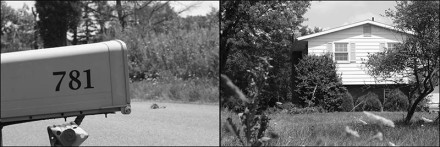
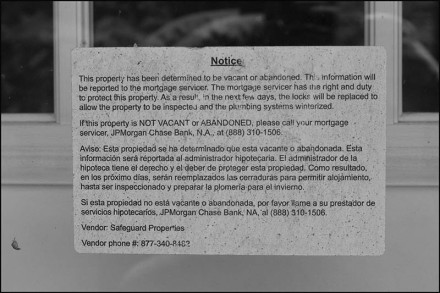
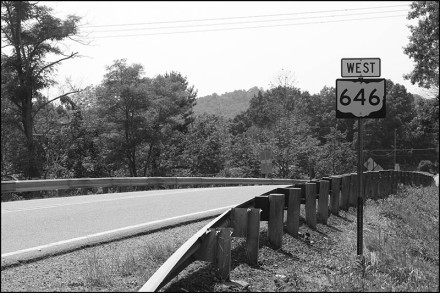
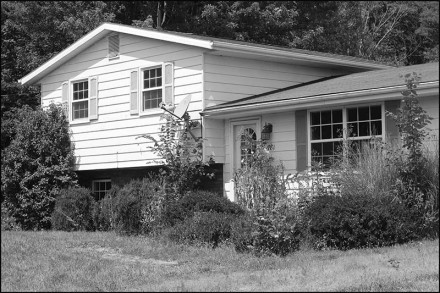
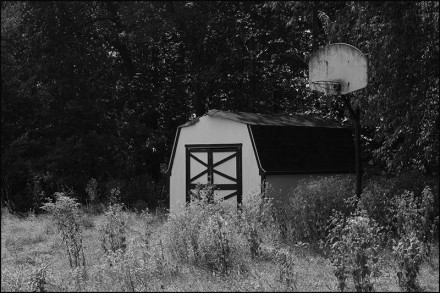
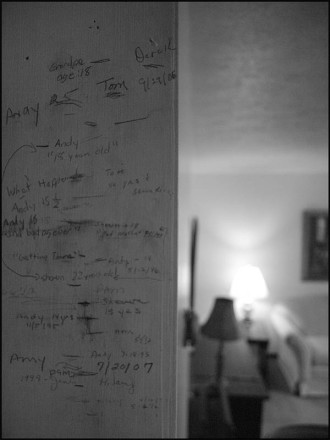


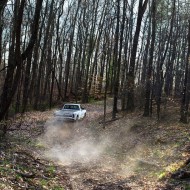





























You can also subscribe to this post comments RSS feed.